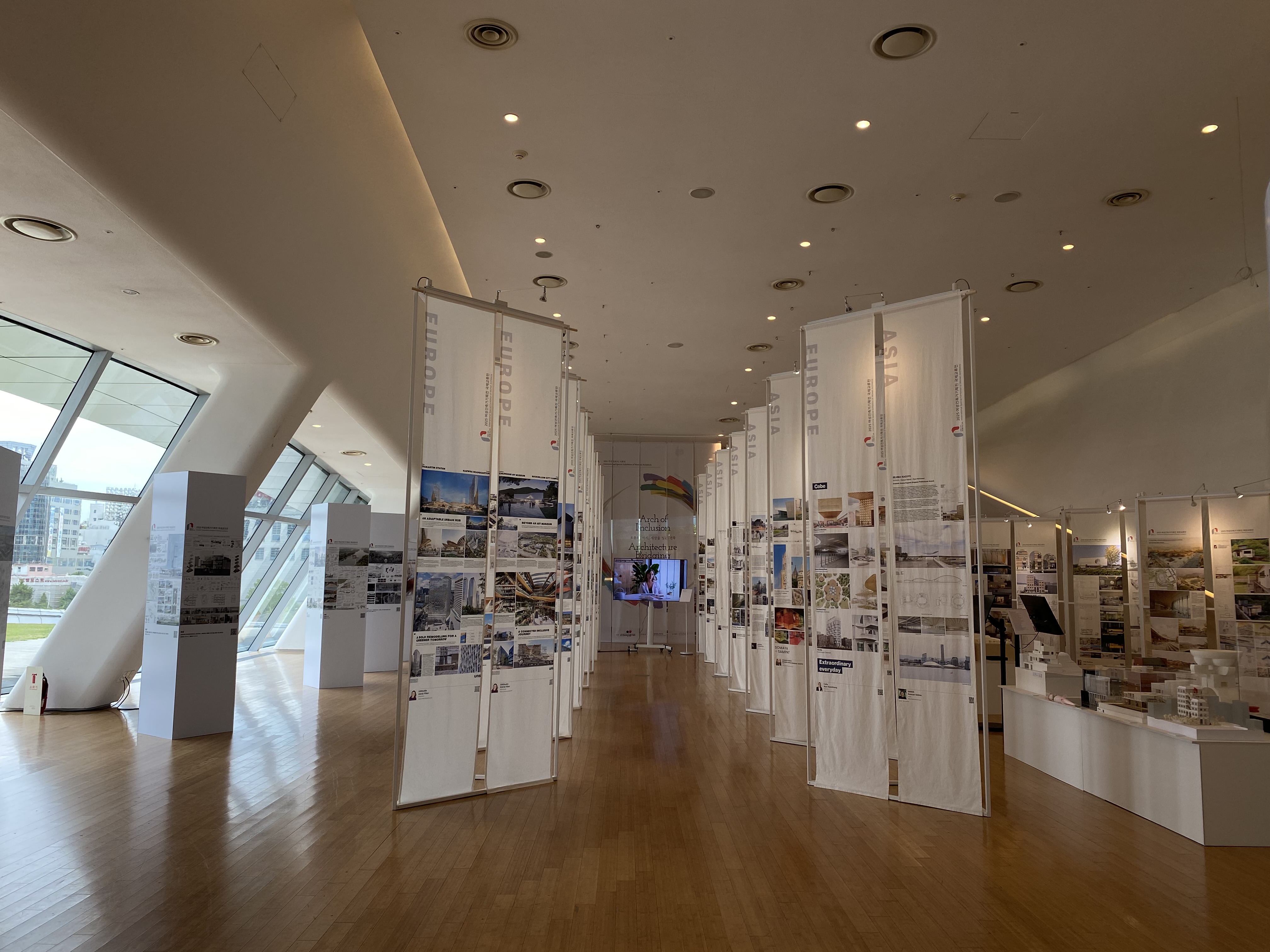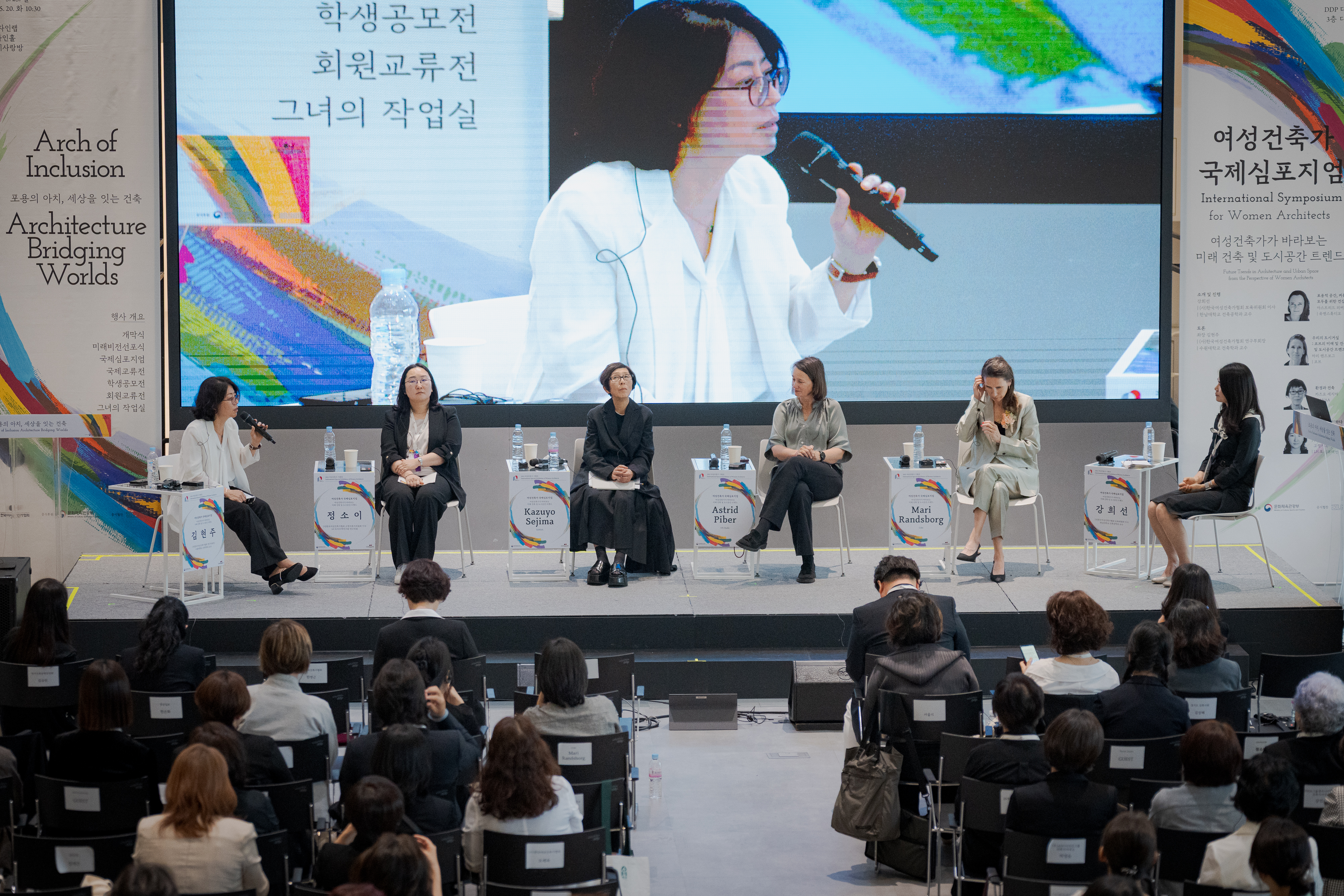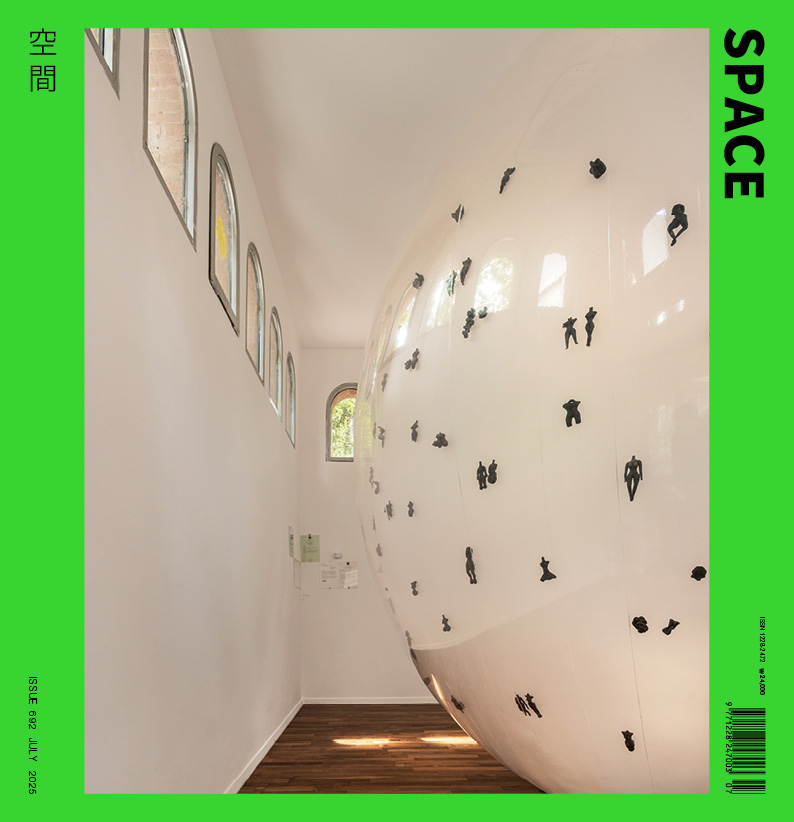SPACE July 2025 (No. 692)

Exhibition view of ‘2025 International Special Exhibition of Women Architects’ / ©Kim Hyerin

View of Women Architects International Symposium, from left Hyun-ju Kim, So-yi Cheong, Sejima Kazuyo, Astrid Piber, Mari Randsborg, Hee-sun Kang / Image courtesy of Korean Institute of Female Architects
On May 20, the ‘Women Architect International Symposium’ was held at Dongdaemun Design Plaza (DDP). The event began with an introduction and moderation by Hee-sun Kang (professor, Hannam University) In this symposium, Astrid Piber (partner, UNS) delivered her speech ‘Inclusive Space, Communities and Better Health for All’, to introduce her strategies of addressing sustainable urban densification with digital tools and design innovation. The Dutch firm, UNS, does not rely solely on technology but instead regards location, context, and culture as dynamic design conditions. Furthermore, they realise ‘healthy architecture’ through experience-based, human-centred design that incorporates psychological and social factors. Piber states that inclusive spaces, which are accessible to all, go beyond mere architecture and contribute to the formation of communities and the creation of resilient urban environments. Subsequently, Mari Randsborg (CEO, Cobe) made her speech called ‘Our Urban Living Room: Future Trends in Architecture and Urban Space from Cobe’. She introduced real-world projects that reflect key concepts of future urbanism, including: the ‘5-Minute City’, a concentrated urban structure designed for a five-minute walking distance; ‘Life Between Buildings’, a concept that places housing around vibrant public spaces that provides a range of activities; the ‘Climate-Responsive City’, and ‘Urban Spaces with Resilient Publicness’. Sejima Kazuyo (co-principal, SANAA), in her lecture ‘Environment and Architecture’, introduced eight projects by SANAA, illustrating five key architectural directions: the dissolution of boundaries, integration with nature, continuity and flow, publicness and openness, and lightness and transparency. Lastly, So-yi Cheong (senior research fellow, Land & Housing Research Institute) explored different methodologies through which to reconfigure spaces for a new society shaped by low birth rates and an aging population, under the theme ‘Design the Future: Architecture for Coexistence and Care’ To successfully create an architectural environment for coexistence and care, she proposed four key paradigms: usercentred design, intergenerational integration, sustainable environments, and smart AI technologies. Based on these key words, she suggested specific strategies including, expanding housing options for the elderly; promoting intergenerational integration through shared housing, facilities, and parks; transforming underused spaces and implementing green infrastructure in both indoor and outdoor environments; designing urban environments that reflect the life cycle; and using smart care technologies and customised smart childcare systems to build AI-enabled spaces and caregiving environments. The symposium continued with a discussion session between the participating architects and moderators Hyun-ju Kim (professor, The University of Suwon) and Hee-sun Kang. The discussion ‘Inclusive Urban Space and the Role of Women Architects’, was focused on reinterpreting the concept of inclusivity in urban and architectural spaces within diverse cultural and social contexts. The session offered insights into the various efforts and practical approaches being undertaken to bring this vision to life.
In connection with the symposium, an exhibition, ‘2025 International Special Exhibition of Women Architects’ was held from May 20 – 25 at the JANDI Sarangbang on the fourth floor of the DDP Design Lab. Under the theme ‘Arch of Inclusion Architecture Bridging Worlds’ there were five different exhibitions: ‘An International Exchange Exhibition’ with the participation of 27 women architects from around the world, a ‘Student Design Competition Exhibition’, a ‘Member Exchange Exhibition’ presenting models and project descriptions by members of the Korean Institute of Female Architects, ‘Her Studio’, and the ‘Honorary Presidents’ Archive Exhibition’, showcasing the association’s activities over the past 40 years.





